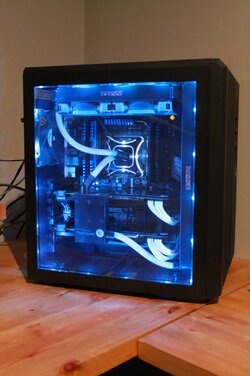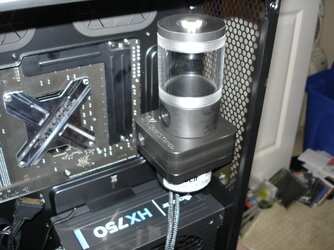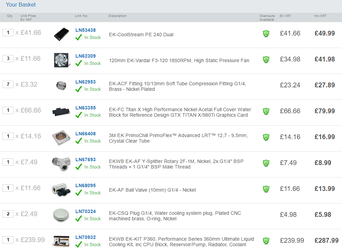- Joined
- May 22, 2011
- Location
- USA
Simple searches of other folk's custom water cooling builds in said case, can go a long away.
I will leave you with a couple of tips to save you some head banging and hair pulling.
-Alphacool ST30s seem to be the sweet choice of rads for the Corsair 540. 240mm top and 360mm front. Airflow configuration usually consists of front as intake while top and rear as exhaust.
-A mini EK res/pump combo setup is usually snugged behind the MB side and just routed back and forth from there.
Any more tips will be a charge of $50. (j/k)
(j/k)
I will leave you with a couple of tips to save you some head banging and hair pulling.
-Alphacool ST30s seem to be the sweet choice of rads for the Corsair 540. 240mm top and 360mm front. Airflow configuration usually consists of front as intake while top and rear as exhaust.
-A mini EK res/pump combo setup is usually snugged behind the MB side and just routed back and forth from there.
Any more tips will be a charge of $50.


